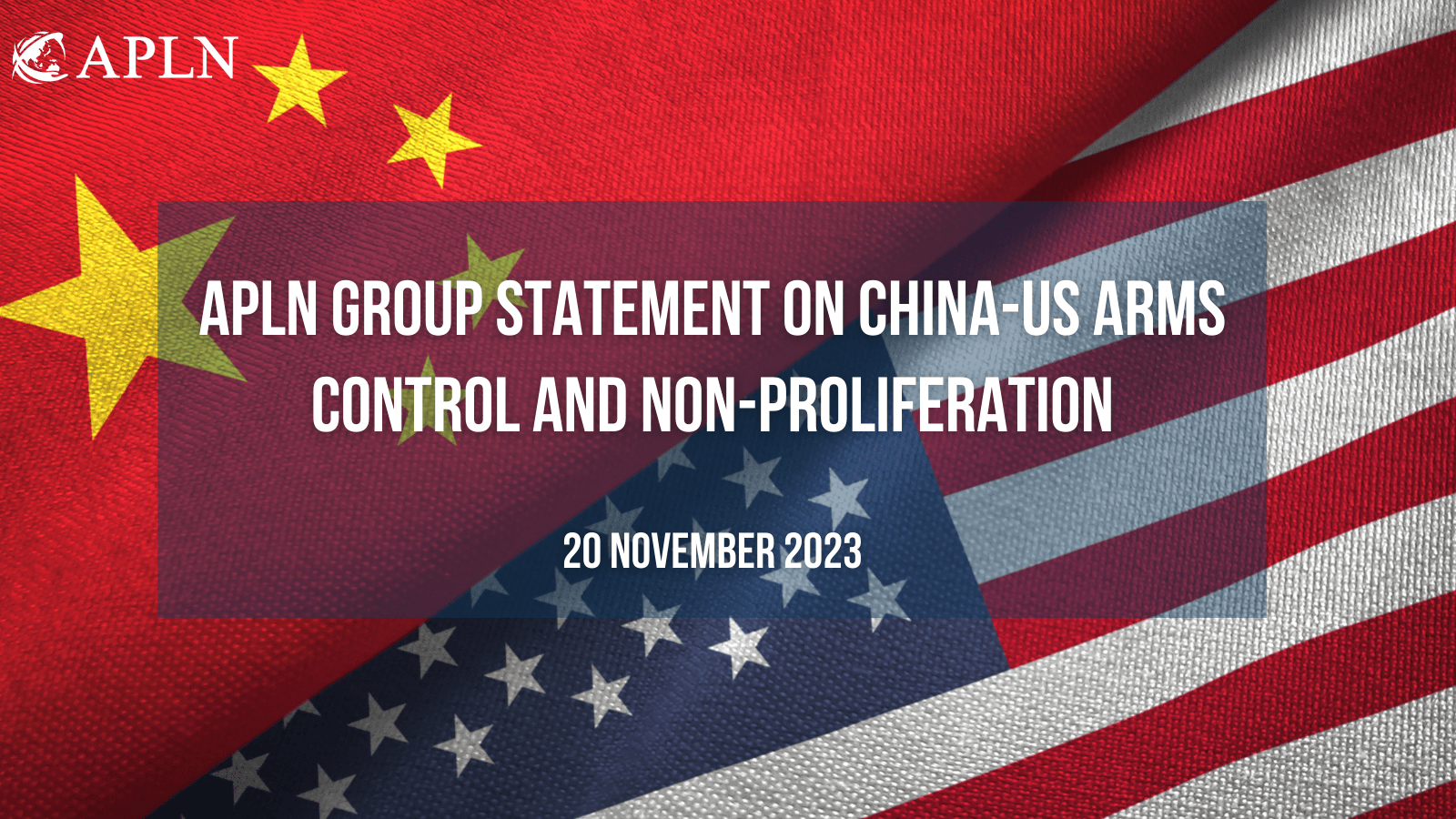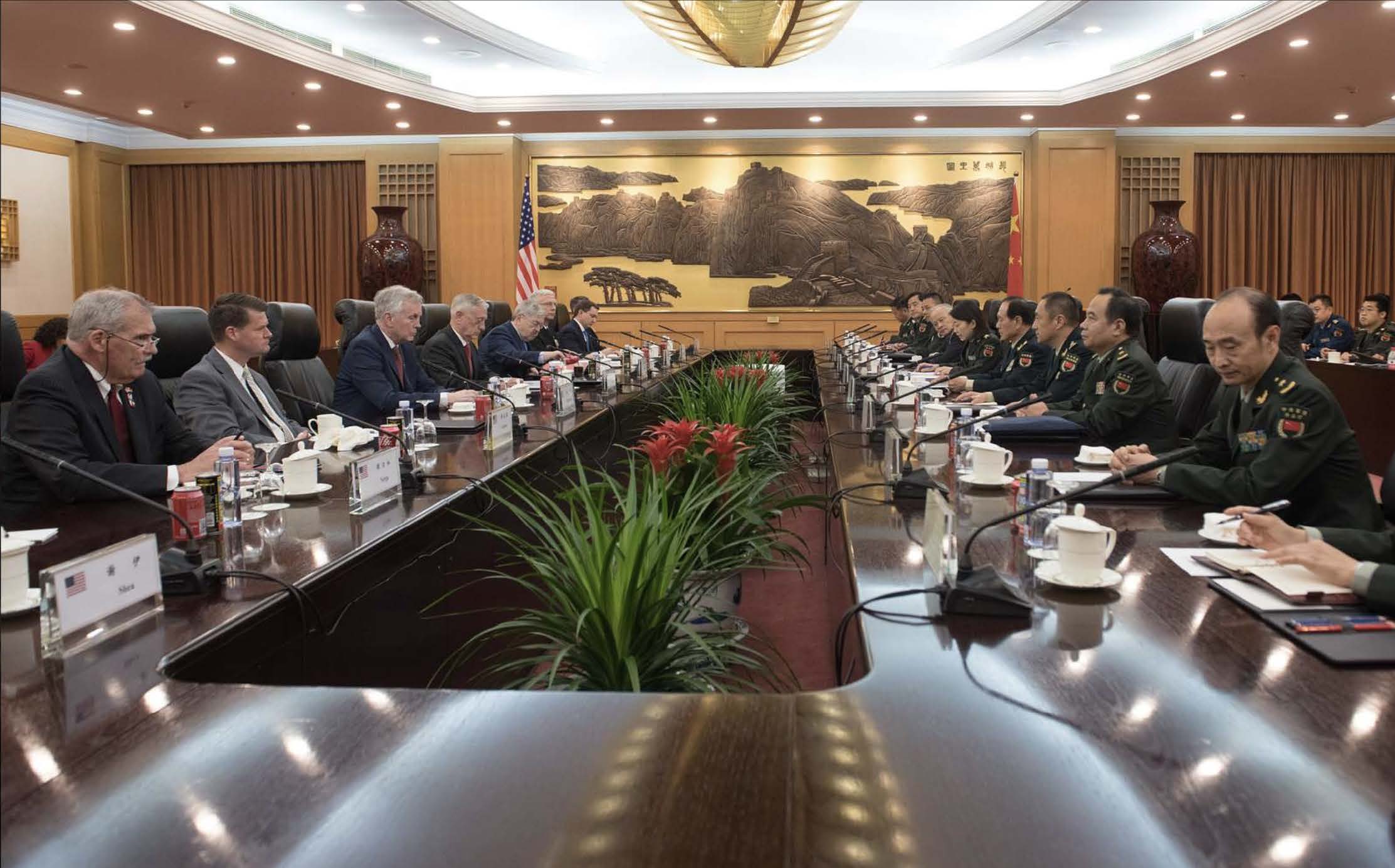US-China Nuclear Arms Control: Time for a Leap of Faith
The United States has recently indicated that it is considering a missile launch notification framework with China. This news comes on the heels of resumed arms control talks, and the meeting between US President Joe Biden and Chinese leader Xi Jinping in San Francisco, where both welcomed the resumption of military-to-military dialogue and affirmed the need to address the risks associated with artificial intelligence (AI). This shows that a constructive, in-depth, and candid dialogue between the two leaders was indeed a positive development, not least because it took place amidst rampant nuclear jingoism.
While these openings must be seen as an opportunity to reduce nuclear risks and, to a degree, stabilize US-China relations, their divergent views on nuclear arms control will likely stifle progress. The 2022 US National Defense Strategy dubs mutual, verifiable arms control critical to reducing the role of nuclear weapons and preventing their use. While stressing that, the Strategy speaks to how China’s nuclear expansion, lack of transparency, and dangerous nuclear strategy and doctrine make reaching mutual and verifiable arms control agreements thornier.
For its part, China has long resisted entering into bilateral and trilateral arms control talks with the United States, asserting that Moscow’s and Washington’s nuclear stockpiles are many times larger than its own. More worryingly, over the past decade, China has become increasingly wary of US efforts to start arms control negotiations because it sees them as an attempt at containment. These concerns can only be addressed through regular, substantive dialogues. Therefore, with a view to making the most of the recent headway at the bilateral level, both Beijing and Washington must urgently commit to three nuclear arms control measures.
Commit to non-testing
First, as signatories to the Comprehensive Test-Ban Treaty (CTBT), both China and the United States should take advantage of their common opposition to the resumption of nuclear testing. It is noteworthy that both have contributed to strengthening the norm against nuclear testing by not conducting nuclear tests since the 1990s, as well as stressing the need for achieving the Treaty’s entry into force. Given their similar positions against further nuclear testing, it would be reasonable for them to jointly speak against any attempts at breaking the moratorium. Such an assurance has become all the more essential to come across as responsible nuclear weapons states, not least because of Russia’s de-ratification of the CTBT.
China and the United States can send a strong message to Russia that they will not accept any nuclear tests. Further, by renewing their commitment to strengthening the norm against nuclear testing, both states will enhance their goodwill among non-nuclear signatories to the Treaty on the Non-Proliferation of Nuclear Weapons (NPT). This goodwill is urgently needed, especially after the successive failures of the NPT’s review process. By averting the resumption of nuclear testing, China and the United States can begin to repair ties between Nuclear Weapon States (NWS) and Non-Nuclear Weapon States (NNWS) ahead of the next Preparatory Committee meeting of the 2026 Review Conference.
High-level dialogue
The United States and China should constructively and directly talk at the highest level, with a view to understanding each other’s intentions and rationales vis-à-vis their modernization programs. China believes that the United States wants to use arms control to limit Chinese capabilities, with a view to gaining a decisive advantage. The United States, on the other hand, is concerned about the rapidity with which China is growing its nuclear arsenal. Also, while China has maintained a no first-use (NFU) policy, US policymakers and scholars argue that, the country’s force modernisation and strategy make it hard to believe that policy. This dissonance plays out in the NPT review process too, hurting the prospect of consensus-building. Such misgivings are not good news for strategic stability and if allowed to become deep-seated, they can provoke behaviors leading to inadvertent and accidental escalation that is complex to manage during crises.
It is imperative for both Beijing and Washington to address these misperceptions. Doing so requires regular, focused talks, in which both sides have a fair degree of mutual strategic empathy and what scholars call “security dilemma sensibility.” If US and Chinese interlocutors warm up to the idea of being more transparent without coming across as inflexible and domineering, more avenues to discuss operational and tactical issues may open up. For example, a better understanding about Chinese nuclear strategy could help determine the kinds of arms control and risk-reduction measures that could be explored and put in place to enhance mutual security and strategic stability.
Stigmatise nuclear weapons use
As internecine wars wreak havoc in Europe and the Middle East, the onus to reduce nuclear dangers associated with them rests with great powers. Therefore, China and the United States must use language that stigmatises nuclear weapons and war. Readouts of their future bilateral parleys must include strong, clear language against fighting a nuclear war, echoing the statement that US President Ronald Reagan and Soviet Union’s General Secretary Mikhail Gorbachev issued in 1985. This would bolster what Nina Tannenwald calls the ‘nuclear taboo.’
While NWS have collectively committed to avoiding and preventing a nuclear war, Russia’s nuclear threats have weakened the taboo, raising the prospect of nuclear use. This has compelled NNWS to castigate the very idea of nuclear deterrence. Concerns about the humanitarian impacts of nuclear weapons have now become the central plank of disquisitions against nuclear weapons. This makes it even more critical for China and the United States to build trust through the language of the taboo. Doing so will partly help allay fears about nuclear use while also giving China and the United States a chance to present themselves as amenable to nuclear disarmament.
We cannot lose and must never give up
It is worth reiterating that joint Sino-US efforts to strengthen the norm against nuclear testing would give a new lease of life to the weakened nuclear non-proliferation regime, not least in the wake of Russia’s de-ratification of the CTBT. Further, the likelihood of miscalculations and escalation of hostilities will reduce significantly, should both Beijing and Washington better understand the drivers of their respective modernization programs and doctrines. An ever-widening trust deficit, however, will increase the prospect of inadvertent and accidental escalation. Last but not least, at a time when nuclear saber-rattling is increasing, a reaffirmation, by both China and the United States, of the futility and destruction of a nuclear war would greatly assuage fears about nuclear use. This, in and of itself, will help bridge the gap between the nuclear haves and have-nots within the NPT.
It is important to remind policymakers that no challenge is intractable or big enough if concerted, sincere efforts are made towards making a better, safer tomorrow. The annals of nuclear history are rich with examples where bold ideas went on to augment strategic stability. It is often said you only lose when you give up. Consequently, Chinese and American policymakers must supplement the famous statement made by Reagan and Gorbachev with this one: we cannot lose and must never give up.
About the Author
Syed Ali Zia Jaffery is the Deputy Director, Center for Security, Strategy and Policy Research (CSSPR) in Lahore, Pakistan.
The opinions articulated above represent the views of the author(s) and do not necessarily reflect the position of the Asia-Pacific Leadership Network or any of its members.
Image: US President Biden and Chinese leader Xi Jinping shaking hands. (Source: Rawpixel)




